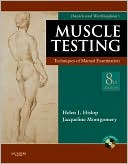Pharmacotherapy Handbook, Seventh Edition
Search in google:
Essential Pharmacotherapy Data at Your Fingertips!A Doody's Core Title ESSENTIAL PURCHASE!4 STAR DOODY'S REVIEW"The book addresses all aspects of 84 disease states and disorders, from presentation and pathology to treatment and monitoring. Each chapter focuses on individual groups of medication considered for treatment and gives a concise overview of them in easy to see bulleted points. The qualities that I find especially useful are that charts and algorithms are easily identifiable and tables are shaded light gray for quick reference . . . Although this handbook contains an enormous amount of information, it conveniently fits into a lab coat pocket. It is an extremely useful reference." — Doody'sPharmacotherapy Handbook delivers the essential information you need to quickly and confidently make drug therapy decisions for eighty-four diseases and disorders. Featuring a convenient alphabetized presentation, the book utilizes text, tables, figures, and treatment algorithms to make important drug data readily accessible and easily understandable.Features: Consistent chapter organization that includes:Disease state definition,Concise review of relevant pathophysiology,Clinical presentation,Diagnosis,Desired outcome,Treatment,Monitoring Six valuable appendices, including a new one on the management of pharmacotherapy in the elderly NEW chapters on adrenal gland disorders and influenza The ideal companion to Pharmacology: A Pathophysiologic Approach, 7e by Joseph DiPiro et al. Joni L. Stahura As stated in the preface, this is the pocket companion to DiPiro's Pharmacotherapy: A Pathophysiologic Approach, 4th Edition (Appleton & Lange, 1999). It is a compendium of concise overviews of select disease states found in the textbook. Each chapter is presented uniformly, giving a definition of the disease state, its pathophysiology, clinical presentation, diagnosis, desired outcome, and treatment/monitoring information. The first edition, published in 1998, was the pocket companion to Pharmacotherapy: A Pathophysiologic Approach, 3rd Edition. The purpose is to provide a portable summary of the critical information found in the textbook. This is meant to allow easy access to information in a clinical setting. The book is written for practitioners and students. Major disease states and disorders are reveiwed. Bulleted statements provide an easy to read format allowing the reader to go quickly from one statement to another, focusing on areas of interest. Additional information is presented in treatment algorithms and tables. The handbook is a good review of the material, but is not a substitute for the textbook. Readers who are not familiar with the topics covered will need to refer to the textbook for in-depth explanations. The authors of the handbook do provide the reader with a cross reference to the textbook for this purpose. Sections on disease state, pathophysiology, presentation, diagnosis, and desired outcome are good, quick reviews. The treatment and monitoring sections contain basic information, but more detailed references would need to be consulted prior to prescribing. It would be helpful if more key points were referenced within thehandbook. The second edition of this handbook does justify replacing the first, in that it is a companion to the new textbook. However, the sections reviewed did not significantly change from the first edition.
PrefaceBONE AND JOINT DISORDERS1. Gout and Hyperuricemia2. Osteoarthritis 3. Osteoporosis4. Rheumatoid Arthritis CARDIOVASCULAR DISORDERS5. Acute Coronary Syndromes6. Arrhythmias7. Cardiopulmonary Resuscitation8. Heart Failure9. Hyperlipidemia10. Hypertension11. Ischemic Heart Disease12. Shock 13. Stroke 14. Venous Thromboembolism DERMATOLOGIC DISORDERS15. Acne16. Psoriasis17. Skin Disorders and Cutaneous Drug ReactionsENDOCRINOLOGIC DISORDERS18. Adrenal Gland Disorders19. Diabetes Mellitus20. Thyroid DisordersGASTROINTESTINAL DISORDERS21. Cirrhosis and Portal Hypertension 22. Constipation23. Diarrhea24. Gastroesophageal Reflux Disease 25. Hepatitis, Viral26. Inflammatory Bowel Disease27. Nausea and Vomiting28. Pancreatitis 29. Peptic Ulcer Disease GYNECOLOGIC AND OBSTETRIC DISORDERS30. Contraception 31. Hormone Therapy in Women32. Pregnancy and Lactation: Therapeutic ConsiderationsHEMATOLOGIC DISORDERS33. Anemias34. Sickle Cell DiseaseINFECTIOUS DISEASES35. Antimicrobial Regimen Selection36. Central Nervous System Infections37. Endocarditis38. Fungal Infections, Invasive39. Gastrointestinal Infections40. HIV/AIDS41. Influenza42 Intraabdominal Infections43. Respiratory Tract Infections, Lower 44. Respiratory Tract Infections, Upper 45. Sepsis and Septic Shock46. Sexually Transmitted Diseases47. Skin and Soft-Tissue Infections48. Surgical Prophylaxis49. Tuberculosis50. Urinary Tract Infections and Prostatitis51. Vaccines, Toxoids, and Other ImmunobiologicsNEUROLOGIC DISORDERS52. Epilepsy53. Headache: Migraine and Tension-Type54. Pain Management55. Parkinson’s Disease56. Status EpilepticusNUTRITIONAL DISORDERS57. Assessment and Nutrition Requirements58. Enteral Nutrition59. Obesity60. Parenteral NutritionONCOLOGIC DISORDERS61. Breast Cancer 62. Colorectal Cancer 63. Lung Cancer 64. Lymphomas 65. Prostate Cancer OPHTHALMIC DISORDERS66. Glaucoma PSYCHIATRIC DISORDERS67. Alzheimer’s Disease 68. Anxiety Disorders 69. Bipolar Disorder 70. Major Depressive Disorder 71. Schizophrenia 72. Sleep Disorders 73. Substance-Related Disorders RENAL DISORDERS74. Acid-Base Disorders 75. Acute Renal Failure76. Chronic Kidney Disease 77. Drug Dosing in Renal Insufficiency 78. Electrolyte Homeostasis RESPIRATORY DISORDERS79. Allergic Rhinitis 80. Asthma 81. Chronic Obstructive Pulmonary Disease UROLOGIC DISORDERS82. Benign Prostatic Hyperplasia83. Erectile Dysfunction84. Urinary IncontinenceAPPENDICES1. Allergic and Pseudoallergic Drug Reactions2. Geriatrics3. Drug-Induced Hematologic Disorders4. Drug-Induced Liver Disease5. Drug-Induced Pulmonary Disorders6. Drug-Induced Kidney DiseaseIndexBarbara Wells, PharmD, FASHP, FCCP, BCPP, Dean and Professor, Executive Director, Research Institute of Pharmaceutical Sciences, School of Pharmacy, The University of Mississippi, Oxford, MSJosepth DiPiro, PharmD, FCCP, Professor and Exectutive Dean, South Carolina College of Pharmacy, Medical University of South Carolina, Charleston, SC, and University of South Carolina, Columbia, SCTerry L. Schwinghammer, PharmD, FCCP, FASHP, BCPS,Professor and Chair,Department of Clinical Pharmacy,School of Pharmacy, West Virginia University, Morgantown, WVCecily V. DiPiro, PharmD, Consultant Pharmacist, Mount Pleasant, SC








